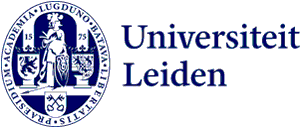
The 2022 edition of Alle Scholen Verzamelen: Wij vinden!
On the 9th of November 2022, 149 groups of last year's primary school children from 31 schools around the Netherlands had the opportunity to become social scientists for a day, researching their own social environment in a Citizen Science project called ‘Wij vinden!” (We find!)

This project was the 2022 edition of the initiative “Alle Scholen Verzamelen” (All Schools Collected), a collaboration between the ‘Wetenschapsknooppunten’ (Science Hubs) based at Dutch Universities, which support regional networks of teachers and educators in the development of pedagogic materials. Every year, a new theme and participatory research project are featured, and schools across the whole country are invited to participate, engaging their pupils as co-researchers alongside the academics leading the research.
In 2022 a joint research project led by Leiden University and Erasmus University called ‘Wij Vinden!’ (We Find!) was selected, in which children were invited to consider their social environments, either at their school, home, or neighbourhood, the adults who influence this environment, and what is needed in these environments to feel good. Each class was asked to list what they found important in one of these three social environments, and come up with a top-five ranking.
In the preparation phase, the pupils formed working groups and assigned themselves individual roles such as interviewer, analyst, or designer, based on their skills and interests. The children then each took a turn being in charge of a specific phase of the research, according to their role. This is a classic Team Science approach,[1] in which people with different skills complement each other, to the benefit of the quality of the research.
During the interview phase, the key figures who influence the pupils’ social environment, such as parents, teachers, soccer coaches, or even the mayor, were provided with the children's list of what they found important, but shuffled randomly out of order. The adults then had to re-order these elements themselves according to how much the key figure acts upon them or aims to realise them.

In the data processing phase, children calculated the difference between the class' top five and the adults’ top five using a results poster and scoring card, and gave their own interpretation of the results. For example, some pupils attributed the differences to the life experience and higher responsibility of key figures, such as caring for the family, while for children their peers are often considered more important.
This is an interesting finding for one of the leaders of the project Yara Toenders, neurobiologist and postdoctoral researcher at Erasmus SYNC lab, who says that the transition between the end of childhood and the beginning of the teenage years is a period of social re-adaptation. Studying this with a Citizen Science approach gives additional insight into the children’s own perspectives during this developmental phase.

In the reporting phase, the children visualized their findings and found creative ways to display and communicate the results. The creativity and variation of methods they chose were wonderful: digital posters, bar charts, films, drawings, comics, and even a rap performance were used to convey their conclusions from the research.
Consideration of the importance of a child’s social environment is of particular relevance in the period after the pandemic, when the possibility for social interaction amongst pupils was diminished, and was mostly limited to the family. The research approach of ‘Wij Vinden!’ offers a tangible way to continue to investigate the role of the social environment in the well-being of children.
It was also interesting to see an ongoing positive impact after they had conducted this research together, on the classroom environment amongst the children. One teacher from the Quadratum School in Rotterdam said that she found it really helpful to talk with her class about what the pupils need in the classroom, using the context of the classroom social environment, and how this really helped the children’s social interactions at school.
“What I also really like is that I feel children really changed their minds about science” says Yara. One of our tasks as scientists is to engage the public, and with this project they can have the chance to actively be a scientist for a day. “Some pupils also said that they want to be a scientist in the future” adds Yara, smiling.
Citizen Science approaches can engage citizens in any stage of the research cycle as participants or co-researchers, with the potential to include them in every aspect of science. This is very important for the reciprocal sharing of knowledge with society, and members of society sharing their insights and knowledge with researchers. For Karlijn Hermans, Coordinator of Open Science at Leiden University and one of the former leaders of the project, scientific insights should be used to tackle societal challenges. For this reason, we need a more collaborative effort between science, industry, the private sector, government, and society. This is exactly what we can achieve with Citizen Science and Open Science more broadly.
[1] Team Science describes a collaborative approach to research, with researchers from various disciplinary fields jointly taking on a scientific challenge in which their individual strengths and expertise demonstrably reinforce each other. SOURCE: the NWO Team Science Award: https://www.nwo.nl/en/team-science-award